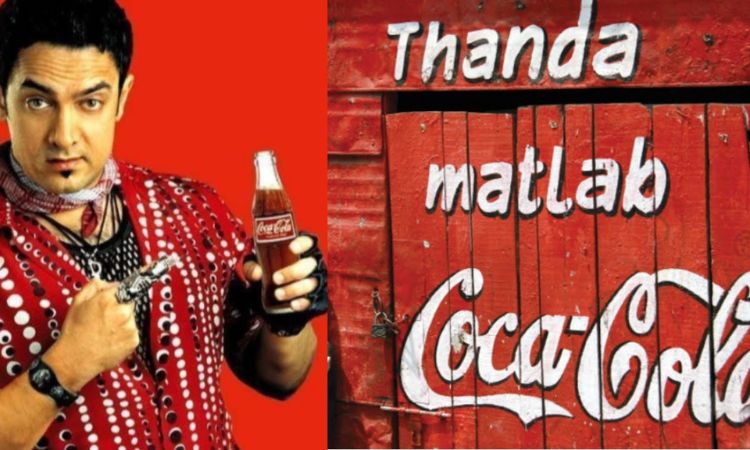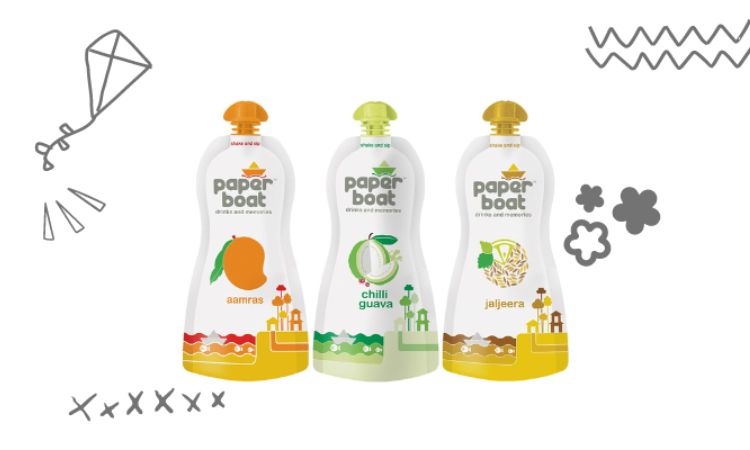When it comes to branding, cultural and societal trends play a crucial role as it provides a framework for individual behaviour and influences people’s decisions. Therefore, understanding and incorporating the cultural and societal influences of a specific region is essential for organizations to effectively reach their target audience and establish a strong brand presence.

Cultural Values of a Society: Cultural values, which dictate acceptable and unacceptable behaviour, vary from country to country. For example, the United States is known for its individualistic values, where personal preferences drive purchasing decisions, while countries like Japan prioritise group welfare. This cultural variation should be considered when developing marketing strategies, with ads tailored to individualistic or collective values accordingly.
Cultural Variation within Countries: It’s important to note that cultural and societal values can also differ within a country. Marketing strategies targeted at urbanites on the East Coast of the U.S. will differ from those aimed at rural residents in mid-America. These cultural differences should be reflected in marketing campaigns to effectively engage diverse demographics.
Symbols and Symbolism: Symbols and symbolism are also significant aspects of cultural and societal influence. Language, both spoken and unspoken, is a symbol of cultural pride and identity. Marketers must adapt their advertising to align with acceptable language symbols in a particular country or when targeting immigrant populations. Other cultural and societal symbols include folklore, drama, dance, and music.
The Role of Rituals: Rituals, which are learned and repeated patterns of behavior, hold importance in different cultures. They shape how major life events and daily interactions are conducted. Marketing strategies should consider incorporating and leveraging these rituals to connect with consumers and promote products or services effectively.
Variations in Thought Processes: Thought processes can vary among cultures, affecting the way marketing messages are perceived. Some cultures may focus on the entire advertisement, including background details, while others may only identify with the central figure. Marketers need to be aware of these cultural thought processes when designing their strategies.

When introducing a brand to a new market, analyzing the local taste and flavours is crucial for adaptation. In India, for example, each region has its own distinct characteristics deeply rooted in people’s lifestyle, including food habits, fashion, and beliefs. Adapting to these societal influences becomes essential for brands to establish a strong connection and resonate with the target audience.
The communication, thought processes, and decision-making of individuals are significantly influenced by cultural values and social norms. Recognizing the impact of culture on diverse groups of people can assist marketers in crafting content that effectively resonates with them. Culture marketing not only enables brands to establish positive connections with individuals worldwide but also provides various advantages like:
- By implementing effective cultural and societal marketing strategies, businesses can enhance communication with their target audience
- Cultivate strong relationships with customers and foster brand loyalty
- Identify unique opportunities for product or service innovation
- Increase revenue, sales, and return on investment (ROI), and expand their global presence by entering new markets.
Cultural blending serves as a crucial factor in addressing the ethnic and ethical aspects of the population residing in a particular region. The evolution of the Indian market in the context of globalization serves as a prominent example. Numerous international brands have recognized the significance of adapting to cultural and societal blends to establish a strong presence in the fiercely competitive landscape of both rural and urban areas.
1: Kellogg’s in India

Kellogg’s, an American multinational food manufacturing company, entered the Indian market in September 1994 with a marketing strategy focused on positioning itself as a “Crispy breakfast food.” However, Indians preferred hot and hearty breakfasts, so they ended up having Kellogg’s cereal with hot milk instead of cold milk as intended. Realising this cultural disconnect, Kellogg’s revamped its marketing strategy and repositioned itself as an “All Day Meal” option, highlighting the nutritional value of its products. With catchy Hindi slogans and affordable pricing, Kellogg’s successfully adapted to the Indian cultural context and experienced significant growth in the country.
2: McDonald’s in India

McDonald’s, the world’s largest chain of hamburger fast-food restaurants, faced challenges when entering the Indian market due to its diverse culture. The majority of Indians are vegetarian and hold cows as sacred, so McDonald’s had to make significant adjustments to its menu. The company introduced a variety of vegetarian options and established separate kitchens for vegetarian and non-vegetarian meals to respect religious and cultural sentiments. McDonald’s also adopted a smart pricing strategy, offering affordable items like the Aloo Tikki Burger to cater to the Indian market. By understanding local tastes and sensitivities, McDonald’s now operates over 350 outlets in India and plans to expand further.
3: Coca-Cola in India

Coca-Cola initially entered the Indian market in the late 1970s but faced challenges and left due to government regulations. When it re-entered in 1993, Coca-Cola quickly adapted its communication to appeal to Indian consumers. Leveraging Bollywood and cricket, two pillars of Indian advertising, Coca-Cola engaged popular film stars and cricketers to promote its brand. The successful “Thanda matlab Coca-Cola” campaign struck a chord with Indian consumers. Coca-Cola also localised its strategies by reducing prices, introducing regional flavours, and addressing the pesticide controversy by emphasising quality control in its production process. These efforts helped regain the trust of Indian consumers.
4: Paper Boat in India

Paper Boat, a brand of non-carbonated beverages, positioned itself as a traditional and authentic indigenous drink packaged in eco-friendly materials. Recognizing the importance of local flavours and cultural connections, Paper Boat introduced drinks like Jamun Kala Khatta, Aam Ras, Anardana, and Kokum. By capturing the essence of different regions and festivals in India, the brand established a deep emotional connection with consumers. For example, it launched Thandai during Holi and Panakam during Ram Navami. Paper Boat’s success can be attributed to its strong understanding and incorporation of local culture. This approach has allowed the brand to expand into international markets.
How to craft an engaging Culture Marketing Campaign?

Creating a successful culture marketing campaign requires marketers to delve into the culture, stay updated with current events, and be attentive to social changes. Here are some informal steps to follow when developing a culture marketing campaign:
Get to know the language:
Understanding the language spoken by your target audience is crucial. If you aren’t fluent in their language, make sure to have bilingual professionals on your team who can help with translation. Using the correct pronunciation, spelling, and grammar is essential for your brand to appear credible and trustworthy. Also, be mindful of the different meanings words may have in different regions, even within the same language. For instance, Americans refer to canned products as “cans,” while Europeans use the term “tins.” These nuances can significantly impact the effectiveness of your marketing materials.
Dive into traditions and taboos:
Research cultural traditions and taboos to ensure that your content aligns with what is acceptable and respectful. Symbols, clothing choices, numbers, and words often carry cultural significance that varies across regions. Seek guidance from experts familiar with cultural traditions to determine what elements are appropriate to include in your marketing materials.
Understand social values:
Social values shape consumer perceptions and influence purchasing decisions. They stem from factors such as morals, education systems, political views, family dynamics, religious beliefs, and personal experiences. For example, in the United States, individualism is highly valued, whereas in Japan, a collective mindset prevails. Understanding these social values helps you tailor your marketing campaigns to resonate with your audience.
Respect religious beliefs and customs:
Religious beliefs and customs play a significant role in consumer behaviour. Being aware of prevalent religions and customs within your target audience can help you create content that respects their beliefs and practices. It may also enable you to leverage specific holidays or events in your promotional messages. For example, considering the sacredness of cows in the Hindu religion, marketers typically avoid advertising products that contain beef to this target audience.
Brainstorm ideas:
Utilise the research you’ve conducted to generate ideas for marketing a product, service, or brand. Encourage input from your team members to foster creativity and explore various marketing materials and platforms. Focus on how your offerings can address the specific needs of your audience, identifying opportunities to develop unique products or services that align with their culture. Collaborate with the research and development team to innovate and enhance your offerings.
Consult with experts:
While your research is valuable, consulting experts with direct cultural experience is invaluable. Work alongside professionals from the target culture to gain deeper insights into appropriate advertising practices. Seek their input throughout the marketing strategy and development process. Additionally, have someone fluent in the language review your marketing materials for accuracy before launching them publicly. Gathering feedback from a control group can further refine your campaign’s effectiveness.
Conclusion
In conclusion, culture plays a pivotal role in branding and marketing. Understanding and incorporating cultural influences is crucial for organizations to effectively reach their target audience and establish a strong brand presence. By recognizing the cultural values of a society, embracing cultural variations within countries, utilising symbols and symbolism, leveraging rituals, and acknowledging variations in thought processes, marketers can craft engaging culture marketing campaigns that resonate with diverse audiences.
Successful examples from brands like Kellogg’s, McDonald’s, Coca-Cola, and Paper Boat demonstrate the importance of adapting to local tastes, incorporating regional flavours, respecting religious beliefs, and establishing emotional connections through cultural authenticity. These brands have effectively tapped into the power of culture to establish a strong foothold in new markets, connect with consumers, and drive brand loyalty.
In a world that is increasingly diverse and interconnected, culture marketing is not only a strategic necessity but also an opportunity to celebrate and embrace the richness of human experiences. By embracing cultural diversity, marketers can foster inclusivity, promote understanding, and ultimately drive business success. So, let us embrace the power of culture in our marketing efforts and create campaigns that resonate, inspire, and leave a lasting impact.















